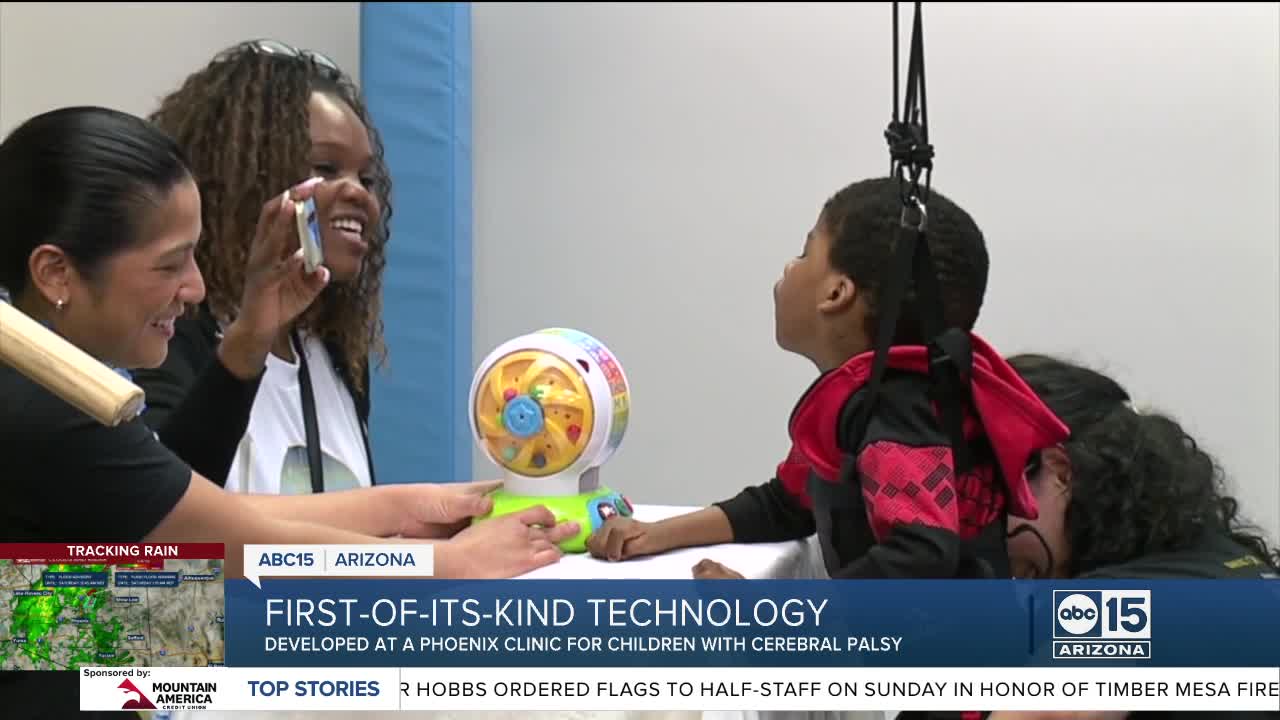PHOENIX — A Valley clinic is using groundbreaking robotic technology to help babies and toddlers with motor disorders take their first steps.
United Cerebral Palsy of Central Arizona recently unveiled the Baby-G robotic trainer, designed specifically to treat infants and toddlers with cerebral palsy and other motor disorders. The clinic says it's the first globally to offer this technology specifically for the treatment of such young patients.
"Kids just light up in it, and we've had some tears already, tears of joy," said Brittany Landabazo, a physical therapist with UCP.
The Baby-G trainer works by reducing a child's body weight, making movement easier and allowing them to practice motions that might otherwise be impossible.

Do you have a concern in your community or a news tip? We want to hear from you!
Connect with us: share@abc15.com
The technology aims to do more than just provide playtime. The goal is to help develop babies' brains toward stronger motor skills earlier in life through early treatment.
"We really are advocating for early diagnosis and early intervention," Landabazo said.
While similar robotic trainers have been used for older children, this marks the first time the technology has been adapted for infants and toddlers. Nicole Anderson, whose 10-year-old daughter Alexandra has used the technology, understands its transformative potential.
"When you're watching her and you see her finally take that first step without as much support with the zero G, it's truly magic," Anderson said.
Anderson believes bringing this technology to younger children could dramatically improve their quality of life.
"It truly will be lifesaving, so maybe when they're 3, 4, 5, 6 years old instead of 10 like my daughter, they'll be taking those first steps," Anderson said.
Studies of this treatment in children have shown a higher chance of gaining independent mobility compared to those who don't receive the therapy.
This story was reported on-air by a journalist and has been converted to this platform with the assistance of AI. Our editorial team verifies all reporting on all platforms for fairness and accuracy.





